8 Crown Street, Darlington, County Durham, DL1 1LU
This pub is named after a former editor of the Northern Echo who went on to become one of the most influential men of his age. William Stead submitted several articles to the Northern Echo which were so well received that, in 1871, he was offered the editor’s chair without ever having set foot inside a newspaper office. He was in charge at the Northern Echo for nine years, before moving on. His new journalism paved the way for today’s tabloid press. One of the most influential men of his age, Stead was one of those who lost their lives on board the Titanic in 1912.
A photograph of Blackwellgate, c1910.
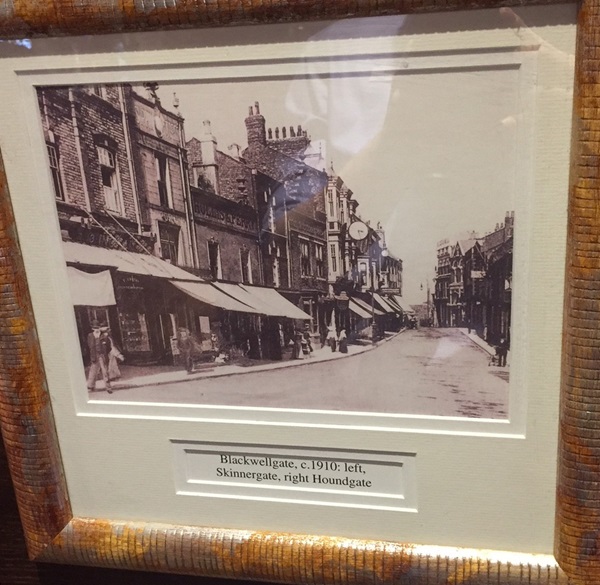
A photograph of the Blackwellgate at the Houndgate turning.
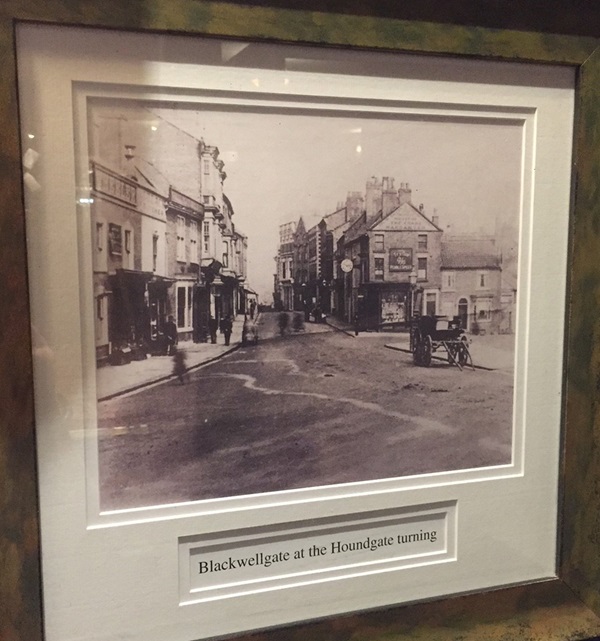
A photograph of the horsefair in Bondgate, c1895.
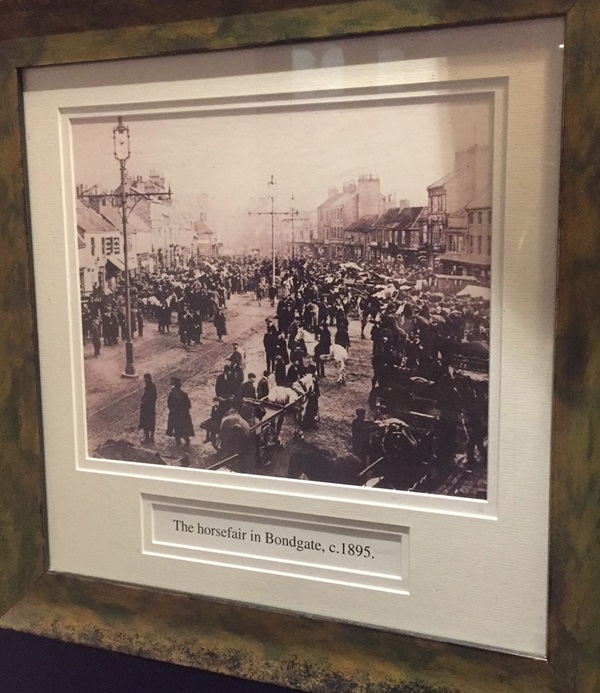
A photograph of a tram climbing up Tubwell Row, c1910.
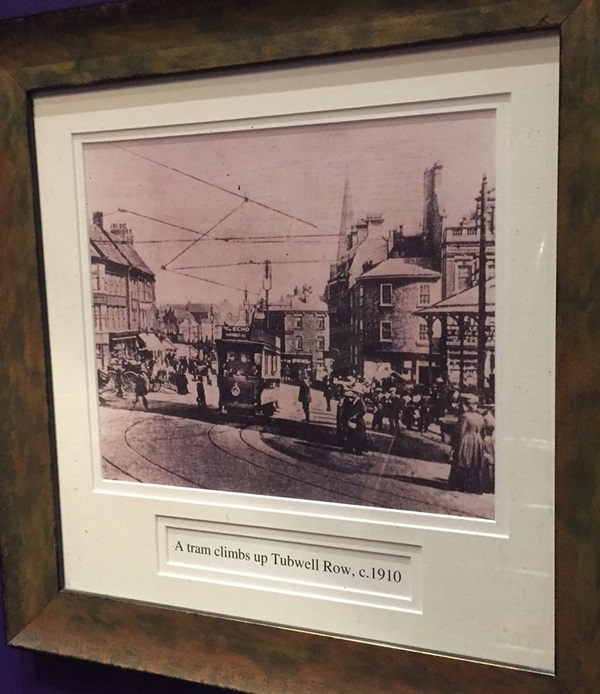
A photograph of Fothergill Fountain in Bondgate, c1870.
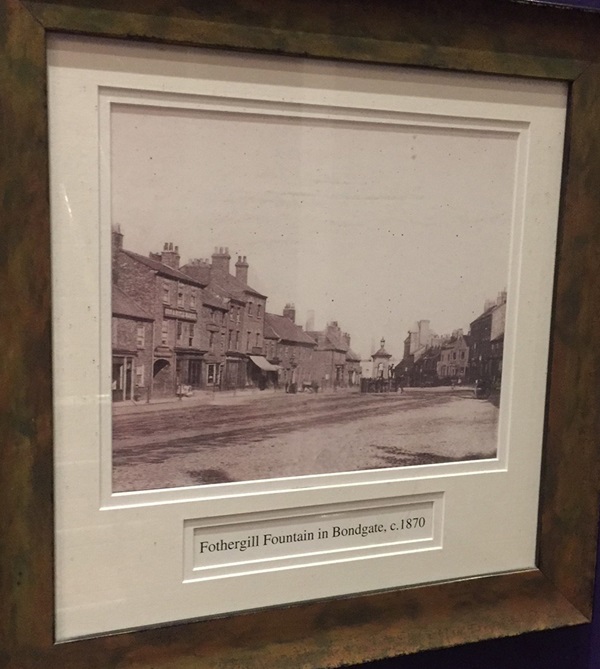
A photograph of itinerant Italian musicians serenade outside Dinsdale Rectory in 1892.
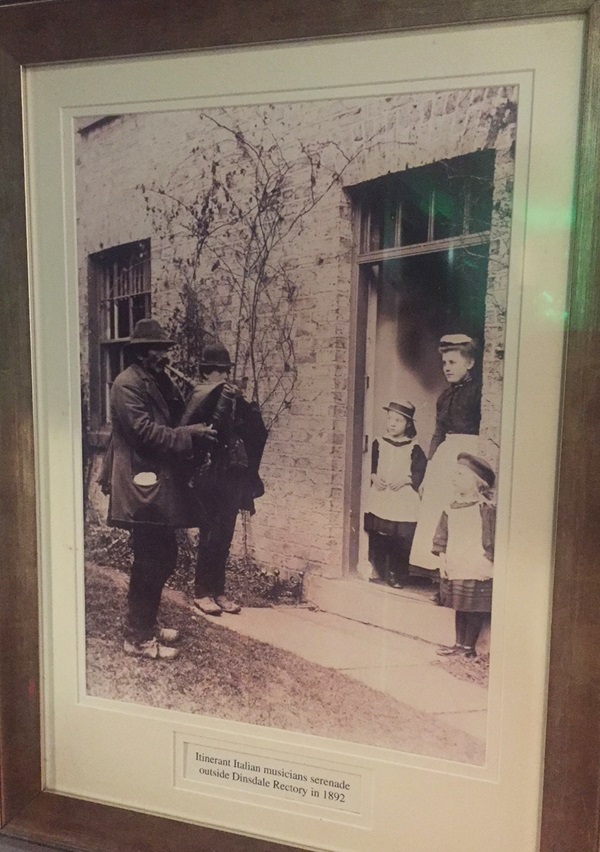
Prints and text about Crown Street.
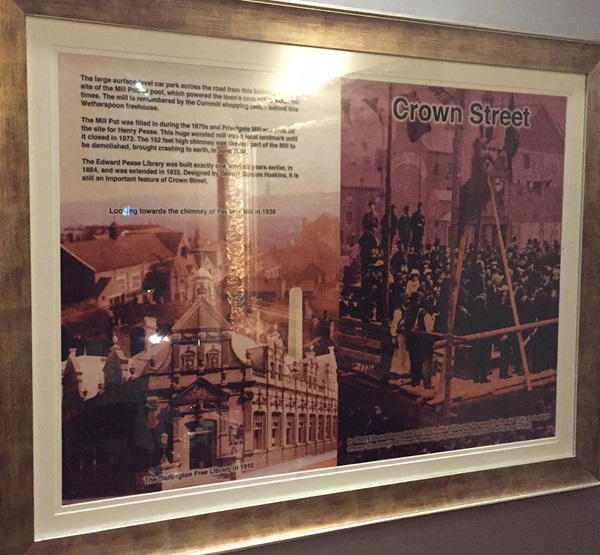
The text reads: The large surface-level car park across the road from this building is the site of the Mill Pot, or pool, which powered the town’s corn mill in medieval times. The mill is remembered by the Cornmill shopping centre behind this Wetherspoon freehouse.
The Mill Pot was filled in during the 1870s and Priestgate Mill was built on the site for Henry Pease. This huge worsted mill was a local landmark until it closed in 1972. The 152 feet high chimney was the last part of the mill to be demolished, brought crashing to earth, in June 1984.
The Edward Pease Library was built exactly one hundred years earlier, in 1884, and was extended in 1933. Designed by George Gordon Hoskins, it is still an important feature of Crown Street.
A photograph and text about High Row.
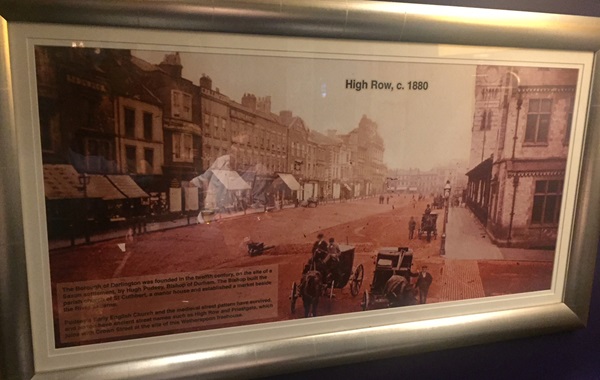
The text reads: The Borough of Darlington was founded in the twelfth century, on the site of a Saxon settlement, by Hugh Pudsey, Bishop of Durham. The Bishop built the Parish Church of St Cuthbert, a manor house and established a market beside the River Skearne.
Pudsey’s early English Church and the medieval street pattern have survived, and so too have ancient street names such as High Row and Priestgate, which joins with Crown Street at the site of this Wetherspoon freehouse.
A photograph of St Cuthbert’s Church, Darlington.
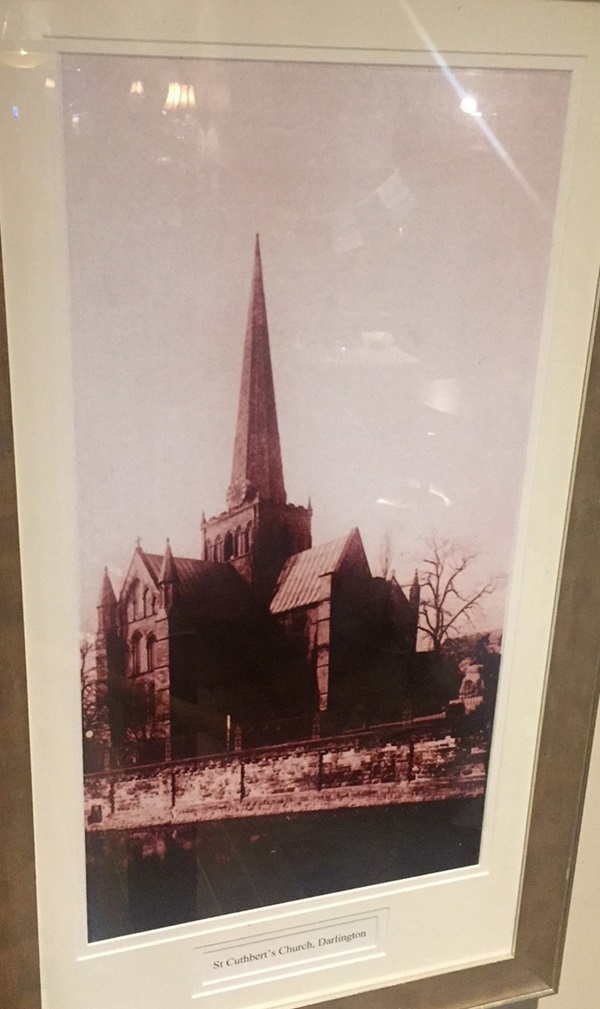
External photograph of the building – main entrance.
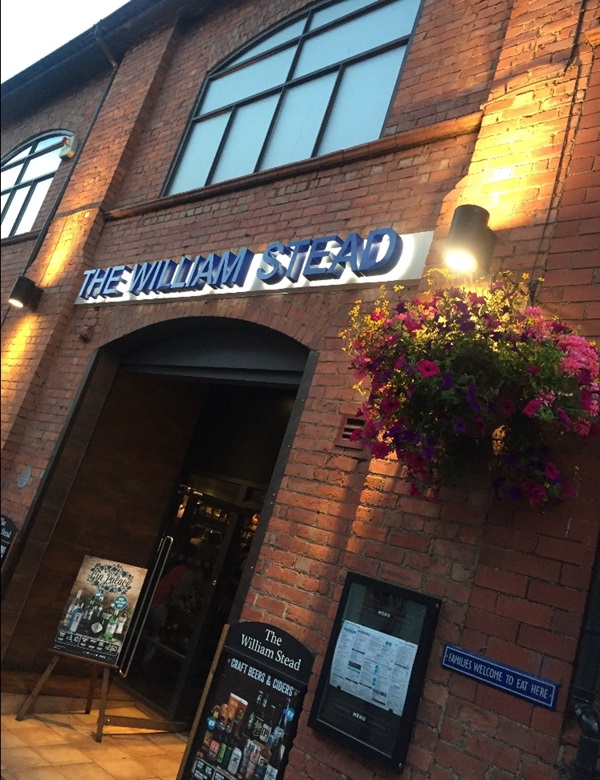
If you have information on the history of this pub, then we’d like you to share it with us. Please e-mail all information to: pubhistories@jdwetherspoon.co.uk